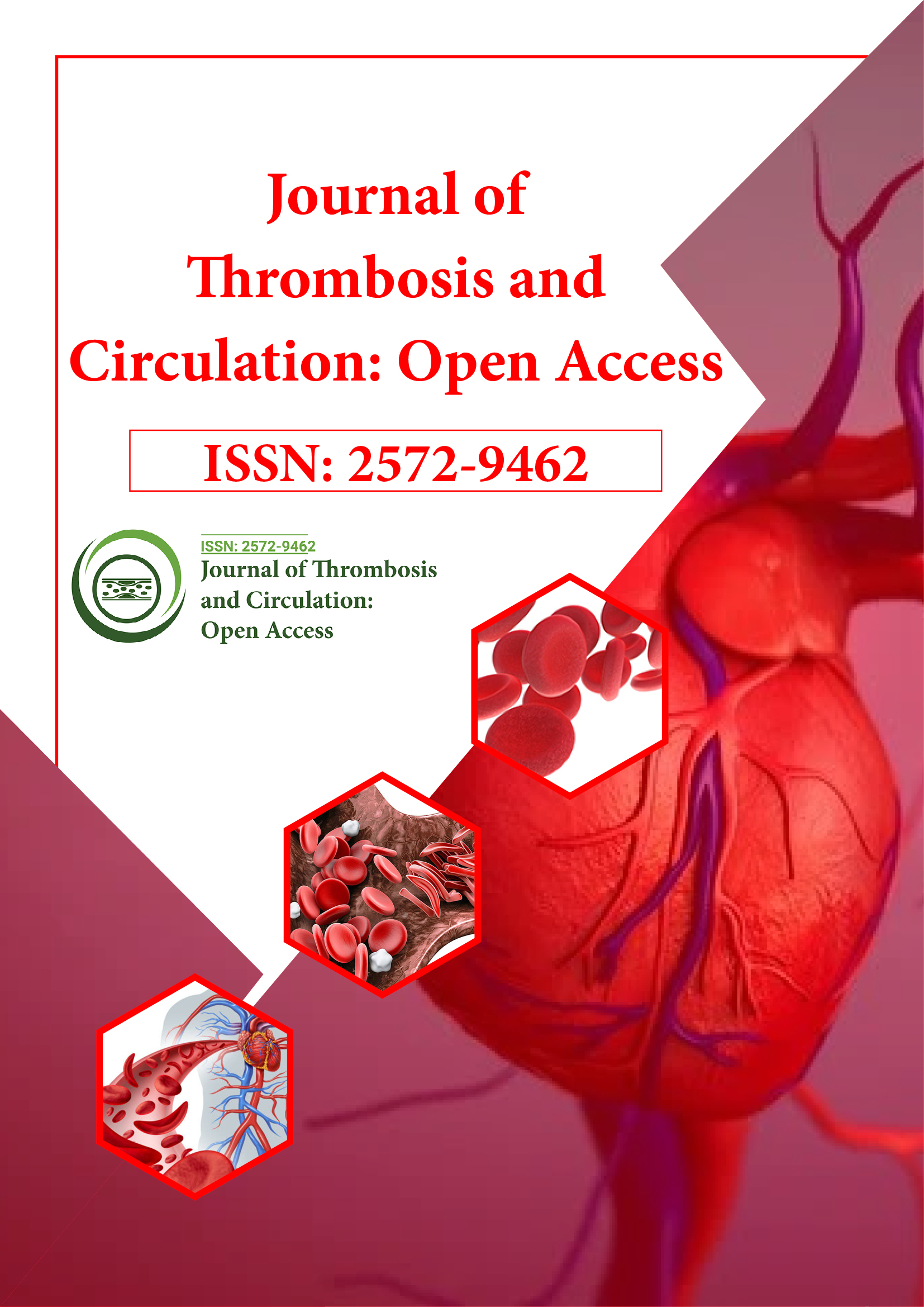Indexed In
- RefSeek
- Hamdard University
- EBSCO A-Z
- Publons
- Google Scholar
Useful Links
Share This Page
Journal Flyer

Open Access Journals
- Agri and Aquaculture
- Biochemistry
- Bioinformatics & Systems Biology
- Business & Management
- Chemistry
- Clinical Sciences
- Engineering
- Food & Nutrition
- General Science
- Genetics & Molecular Biology
- Immunology & Microbiology
- Medical Sciences
- Neuroscience & Psychology
- Nursing & Health Care
- Pharmaceutical Sciences
Opinion Article - (2023) Volume 9, Issue 5
Thrombus Variability in Acute Myocardial Infraction Patients: Implications for Therapy
Ryan Alenezi*Received: 18-Aug-2023, Manuscript No. JTCOA-23-23290; Editor assigned: 21-Aug-2023, Pre QC No. JTCOA-23-23290 (PQ); Reviewed: 06-Sep-2023, QC No. JTCOA-23-23290; Revised: 13-Sep-2023, Manuscript No. JTCOA-23-23290 (R); Published: 21-Sep-2023, DOI: 10.35248/2572-9462.23.9.249
Description
Acute Myocardial Infarction (AMI), commonly known as a heart attack, is a life-threatening cardiovascular event that occurs when blood flow to a part of the heart muscle is blocked, usually by a blood clot or thrombus. The timely and effective management of AMI is paramount to reducing morbidity and mortality rates associated with this condition. Antiplatelet therapy, a keyelement of AMI treatment, plays a crucial role in preventing further thrombus formation and promoting reperfusion. Recent research has focused on the interconnection between thrombus architecture and the efficacy of antiplatelet loading treatment in AMI patients. In this article, we delve into this intriguing connection and explore its implications for improving patient outcomes.
The role of thrombus in acute myocardial infarction
Thrombus formation is a complex process involving the aggregation of platelets and fibrin, which can obstruct coronary arteries during an AMI. These thrombi, which are essentially blood clots, limit blood flow to the heart, leading to myocardial ischemia and tissue damage. Rapid intervention is essential to restore blood flow, reduce cardiac injury, and prevent complications. Antiplatelet therapy, including drugs like aspirin, clopidogrel, and ticagrelor, is a fundamental component of the treatment strategy.
Traditionally, the focus of antiplatelet therapy has been on preventing platelet aggregation and clot formation. However, recent advances in medical imaging techniques, such as Intravascular Ultrasound (IVUS) and Optical Coherence Tomography (OCT), have allowed researchers to explore the microarchitecture of thrombi within coronary vessels. This has revealed that thrombus formation is not a uniform process but rather exhibits considerable variability in terms of structure and composition.
Thrombus architecture refers to the organization and composition of a thrombus, including factors such as platelet content, fibrin density, and red blood cell entrapment. It has become evident that these structural variations can significantly influence the efficacy of antiplatelet loading treatment.
Impact of antiplatelet loading treatment on thrombus architecture
Several studies have highlighted the interplay between antiplatelet therapy and thrombus architecture in AMI patients. Antiplatelet drugs work by inhibiting platelet activation and aggregation, but their effectiveness can be influenced by the composition and structure of the thrombus they are targeting.
Platelet-rich thrombi: Some AMI patients exhibit thrombi that are predominantly rich in platelets. Antiplatelet drugs like aspirin and P2Y12 inhibitors (e.g., clopidogrel, ticagrelor) are particularly effective in preventing platelet aggregation and further clot formation in these cases.
Fibrin-rich thrombi: On the other hand, some thrombi have a higher proportion of fibrin, making them less responsive to traditional antiplatelet therapy. These thrombi may require fibrinolytic agents in addition to antiplatelet treatment to promote clot dissolution.
Red blood cell entrapment: Thrombi that contain a significant number of red blood cells may hinder the penetration of antiplatelet drugs into the clot. In such cases, strategies to enhance drug delivery to the thrombus may be necessary.
Implications for patient care
Understanding the relationship between thrombus architecture and antiplatelet therapy has significant implications for patient care in AMI. Tailoring treatment strategies based on the specific characteristics of the thrombus can potentially improve outcomes. Some key considerations include:
Personalized medicine: Individualized treatment plans that take into account the composition of the thrombus can optimize the choice and dosing of antiplatelet agents.
Combination therapy: In cases of fibrin-rich thrombi, combining antiplatelet therapy with fibrinolytic agents may be more effective in achieving reperfusion.
Imaging-guided interventions: The use of advanced imaging techniques like IVUS and OCT can aid in characterizing thrombus architecture, allowing for real-time adjustments to treatment strategies during invasive procedures.
The relationship between thrombus architecture and the efficacy of antiplatelet loading treatment in AMI patients represents a fascinating and evolving area of research. Recognizing that not all thrombi are alike underscores the importance of individualized treatment approaches. The integration of advanced imaging technologies into clinical practice holds potential for improving outcomes in AMI patients by allowing healthcare providers to make more informed decisions regarding antiplatelet therapy. As our understanding of thrombus architecture continues to evolve, so too will our ability to personalize treatment strategies to the unique needs of each patient, ultimately saving more lives in the fight against acute myocardial infarction.
Citation: Alenezi R (2023) Thrombus Variability in Acute Myocardial Infraction Patients: Implications for Therapy. J Thrombo Cir. 9:249.
Copyright: © 2023 Alenezi R. This is an open-access article distributed under the terms of the Creative Commons Attribution License, which permits unrestricted use, distribution, and reproduction in any medium, provided the original author and source are credited.
